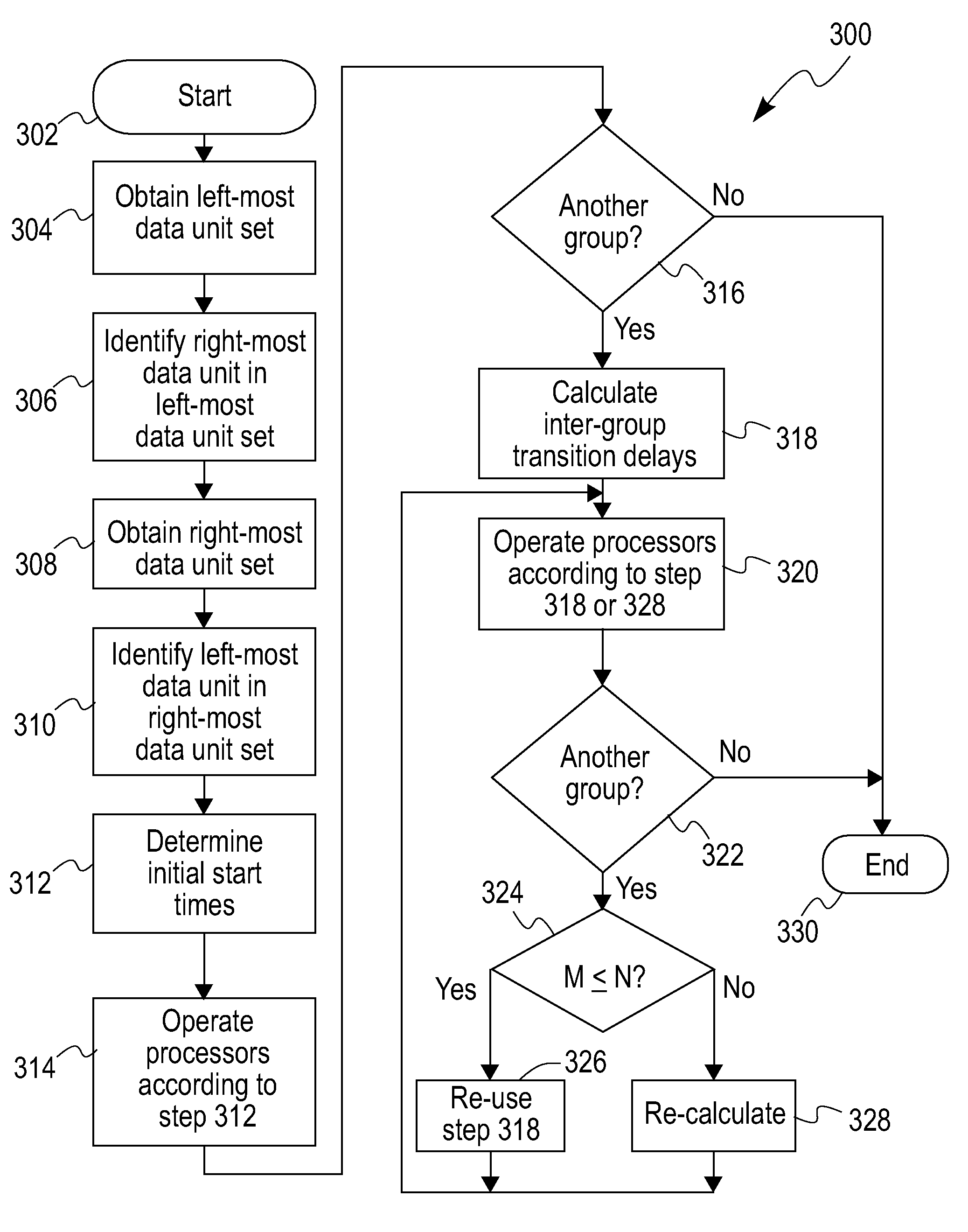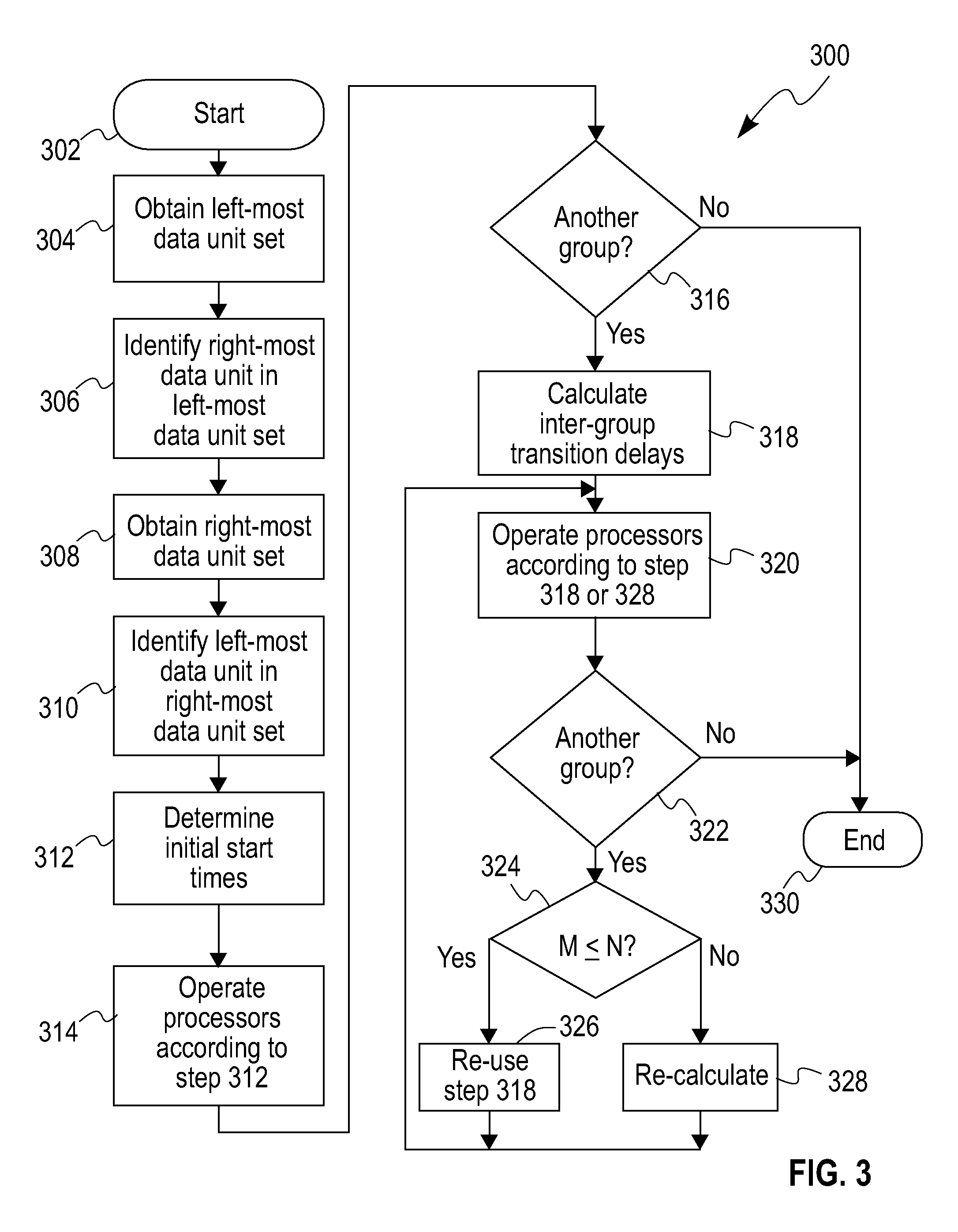Synchronized parallel processing of rows of data with dependencies by determining start time for processors
a technology of synchronized parallel processing and rows of data, applied in the field of parallel processing of data, can solve the problems of limited pipeline speed, inability to optimize computational performance or load,
- Summary
- Abstract
- Description
- Claims
- Application Information
AI Technical Summary
Benefits of technology
Problems solved by technology
Method used
Image
Examples
example
[0067]Consider the non-limiting example of differential coding of motion vectors in H.263, where neighboring motion vectors are used to predict the current motion vector using a structure shown in FIG. 7. The dependencies between blocks extend to only one row 702 above the current row 704, with a maximum distance r1=1. Consider a QCIF (quarter common intermediate format) (176×144) size frame with (16×16) size blocks, i.e. B=11. If we use one processor, the total time to process the frame is 99T. Instead, if we use N=3 processors, then these have start locations PR0=0, PR1=1 and PR2=2, and the waiting time overhead is W0=2T. For each additional set of 3 rows that need to be processed the wait time W1=0, since B>2. The total time to process this frame using three processors is 33T+2T.
Exemplary System and Article of Manufacture Details
[0068]A variety of techniques, utilizing dedicated hardware, general purpose processors, firmware, software, or a combination of the forgoing may be empl...
PUM
 Login to View More
Login to View More Abstract
Description
Claims
Application Information
 Login to View More
Login to View More - R&D
- Intellectual Property
- Life Sciences
- Materials
- Tech Scout
- Unparalleled Data Quality
- Higher Quality Content
- 60% Fewer Hallucinations
Browse by: Latest US Patents, China's latest patents, Technical Efficacy Thesaurus, Application Domain, Technology Topic, Popular Technical Reports.
© 2025 PatSnap. All rights reserved.Legal|Privacy policy|Modern Slavery Act Transparency Statement|Sitemap|About US| Contact US: help@patsnap.com



